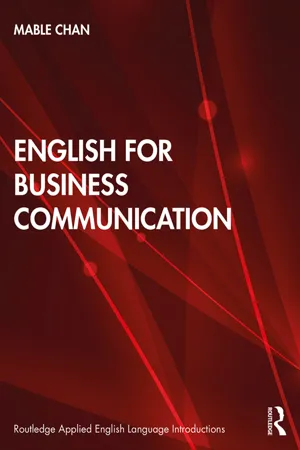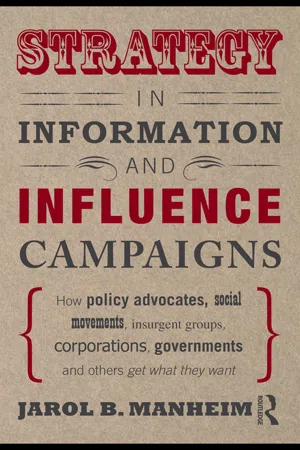Business
Persuasive Strategies
Persuasive strategies are techniques used to influence and convince others to take a particular action or adopt a certain belief. These strategies can include emotional appeals, logical arguments, credibility building, and social proof. Effective use of persuasive strategies can help businesses achieve their goals and objectives.
Written by Perlego with AI-assistance
Related key terms
3 Key excerpts on "Persuasive Strategies"
- eBook - ePub
- Mable Chan(Author)
- 2020(Publication Date)
- Routledge(Publisher)
- Persuade your boss to support your initiatives or/and adopt your suggestions (e.g. in a proposal, business report, sales presentation);
- Persuade customers to buy a product/use your services;
- Persuade the public that your organisation is credible;
- Persuade customers in a reply to complaint that the options provided are the best which could be offered;
- Persuade peers/friends not to give up;
- Persuade companies to compensate (e.g. in claim letters);
- Persuade teenagers not to take drugs in TV broadcasting.
This chapter provides a well-grounded understanding of available persuasive techniques that can be employed and applied to excel in different aspects of the readers’ life. It provides an overview of the key communication strategies to influence, engage and empower. Persuasive techniques used by celebrities and professionals in different sectors of the workplace are demonstrated and their impact highlighted. Successful persuasion requires one to have the skills to access, analyse, evaluate and create various communication strategies in different situations and to use the key language features to achieve this purpose. The two main language features are content words and grammatical words. Content words carry specific meanings, such as nouns, adjectives and verbs. Grammatical words express a functional or structural relationship with other words in a sentence, such as prepositions providing more information about nouns, to - eBook - ePub
- Olga Dontcheva-Navratilova, Martin Adam, Renata Povolná, Radek Vogel(Authors)
- 2020(Publication Date)
- Palgrave Macmillan(Publisher)
2018 ).2.5.2 Persuasive Strategies in Business Discourse
The function of annual reports is to inform and convince their target audiences . Since attitudes influence human thought and action (Perloff, 2010 , p. 41), persuaders aim to change these attitudes because they need to promote a certain kind of behaviour in their stakeholders. Although corporate persuaders use a variety of strategies and language devices, basically they appeal to the three classical Aristotelian persuasive principles . The appeal to logos requires a logical, rational and objective message, and it is fulfilled mainly by provision of well-structured and objective facts. The appeal to ethos involves acting as a credible, reliable, cooperative, competent and empathic source, so businesses show involvement and personal views and create a sense of community, particularly by self-mention of authors (i.e. executives) and the company itself. Lastly, the appeal to pathos is realised by evoking positive emotions (and suppressing negative ones), sounding polite and attractive and by emphasis on responsibility and care.Persuasion in annual reports may be explored from several points of view. These comprise the concept of evaluation as “the expression of the writerʼs or speakerʼs opinion, attitude or stance ” towards the message (Hunston & Thompson, 1999 , p. 5), which broadly corresponds to Martin and White’s wider concept of appraisal (Martin & White, 2005 ) and Hyland’s narrower concept of stance . According to White (2004 ), evaluation concerns two areas, emotion and opinion; the latter can be further divided into appreciation (opinion on aesthetics) and judgement (opinion on ethics). Persuasive Strategies in corporate annual reports are predominantly realised by lexical persuasive devices, namely evaluative, attitudinal and contextually persuasive lexis, but also by self-mentions , including the personification of a company as a collective agent, and interactive devices modulating commitment to claims (especially hedges and boosters - eBook - ePub
Strategy in Information and Influence Campaigns
How Policy Advocates, Social Movements, Insurgent Groups, Corporations, Governments and Others Get What They Want
- Jarol B. Manheim(Author)
- 2011(Publication Date)
- Routledge(Publisher)
In the context of a particular information and influence campaign, any one or more of these objectives may come into play, and the objectives of campaign persuasion will almost certainly vary across audiences and evolve over time. The challenge to the strategist is to construct that mix of communications and other actions that best advances the campaign.Theories of Persuasion
This is where the various theories of persuasion and resistance to persuasion come into play. Over the years, social psychologists have developed quite a number of these, each emphasizing some alternative understanding of the dynamics of persuasion or the relative import of various change agents or points of access to the process. In truth, none of these theories is truly global in either its emphasis or its explanatory power. As a result, the strategist must become adept at drawing more or less extensively from some combination of theories to produce an informed, integrated, and sophisticated plan of attack. Realizing that we cannot do these relatively complex theories credit here, where our interest is primarily instrumental, let us touch briefly on a few of the more interesting frameworks to suggest the kinds of assumptions that a strategist might make about the dynamics of persuasion, and the kinds of strategic and tactical implications that might flow from each. (In organizing this discussion, we are guided in part by the excellent summary of this general topic provided by Daniel J. O’Keefe (2002).)Belief-Based Approach . Perhaps the most basic approach to attitude change corresponds closely with our basic definition of an attitude. As developed in the 1960s by Martin Fishbein, it focuses on the individual’s salient beliefs about a given attitude object. Individuals may have a large number of beliefs about an object, but at any given time some of these will be more salient than others. More specifically—and here is where the parallels to the earlier argument come clear—this approach defines one’s attitude as the sum of these beliefs and their associated evaluations, a notion very similar to what we earlier characterized as an attitude “cluster.” The theory actually offers an equation, in the form A o = Σb i e i
Index pages curate the most relevant extracts from our library of academic textbooks. They’ve been created using an in-house natural language model (NLM), each adding context and meaning to key research topics.


